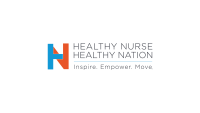There are some things we just know. We know the body can heal itself because we’ve seen it happen over and over again. We know the mind can heal itself, too, because we’ve seen it happen. Research even tells us how this works: When the body is injured, bone marrow releases stem cells that home in on the damaged area. When they arrive, they start to grow into new tissues, such as heart cells, blood vessels, bone, and cartilage.
And we know of the phenomenon called the placebo effect because we have seen it in action, read the research, or debated the ethics of using placebos. Placebos are common in medical research, and their efficacy seems to depend on the use of controlled and measured deception (hence, the ethical concern). In short, we know how to fool the body into tapping into its self-healing properties without using drugs. Moreover, scientists have developed a technique to fool bone marrow into releasing a type of stem cell that makes fresh blood cells; it’s used to collect cells from bone-marrow donors to treat leukemia patients.
Now researchers have discovered a way to stimulate bone marrow to release two other types of stem cells, which between them can repair bone, blood vessels, and cartilage. Giving mice a drug called plerixafor injection (Mozobil) and the naturally occurring vascular endothelial growth factor boosted stem cell counts in the bloodstream more than 100-fold. Scant controversy surrounds giving drugs that fool the bone marrow.
My purpose in going into this is to point out what we know: that the body can heal itself and that we’ve been able to tap into this ability to speed, or even initiate, healing. Tentative studies have been done on the healing effects of intention. Early research on healing intention was done with simple living systems, such as plants. In one early study by Bernard Grad, two different kinds of saline solutions were given to plants. One was normal water; the other was water that had been exposed to healing intentions from a healer. The plants given the “healing water” showed more sprouting and were taller than those given untreated water.
Another series of studies by Grad showed skin wounds in mice healed faster when treated by healers who’d simply laid their hands on them. Faster wound healing by the laying on of hands has occurred in human subjects as well. More recently, a study by a cardiologist at San Francisco General Hospital showed that healing prayer affected the recovery of cardiac surgery patients. The prayed-for patients experienced fewer complications and less morbidity than those who were not prayed for. Although healing touch therapies are still controversial, many books and 90 studies have been published on their efficacy.
A clue to how healing intention works may be found in the way intention affects machines. Experiments have been done with machines that generate strings of random numbers (random event generators); they spew out millions of random numbers that should all statistically cancel out. But researchers have shown these numbers deviate from randomness with human intention; people can influence the machine’s output just by thinking about it. The effect is small but statistically sound. This effect also occurs over great distances.
The point is that intention decreases randomness in the universe. A link exists between human intention and physical reality. Intention is what’s known in quantum physics as a nonlocal phenomenon—one that doesn’t behave in accord with Newtonian physics. Focused intention and attention, held for an adequate period and used in conjunction with conventional medical and nursing interventions, may speed healing by tapping into the body’s self-healing mechanism, thus adding something extra that gives the patient a “quantum edge.”
Leah Curtin, RN, ScD(h), FAAN
Executive Editor, Professional Outreach
American Nurse Today
Visit www.AmericanNurseToday.com/Archives.aspx for a list of selected references.
Dr. Leah Curtin, RN, ScD (h), FAAN, is Executive Editor, Professional Outreach, American Nurse Today. An internationally recognized nurse leader, ethicist, speaker, and consultant, she is a strong advocate for both the nursing profession and high-quality patient care. Currently she is Clinical Professor of Nursing at the University of Cincinnati College of Nursing and Health. For over 20 years, she was the Editor-in-Chief of Nursing Management. In 2007, she was appointed to the Standards and Appeals Board of DNV Healthcare, a new Medicare accrediting authority. Dr. Curtin can be reached at LCurtin@healthcommedia.com.


















5 Comments.
Dear Marty,Sorry you had so much trouble with the links! I agree with you about the little that is known about intention affecting machines! I, too, was floored by it. So were the researchers — but the correlations held up — and were repeated. So…all I can say is ‘wow!’
You have to click on the pdf link to get the references. They are:
Quantum nursing IV: Giving the patient a “quantum edge”
Blyler J. Human intentions affect electronics. http://www.chipdesignmag.com/blyler/2010/11/18/human-intentions-affect-electronics. Accessed March 23, 2011.
Byrd RC. Positive therapeutic effects of intercessory prayer in a coronary care unit population. South Med J. 1988 Jul;81(7):826-9. Emanuel EJ, Miller FG. The ethics of placebo-controlled trials—a middle ground. N Engl J Med
Here’s the affect of intention on random number generators reference: Blyler J. Human intentions affect electronics.
http://www.chipdesignmag.com/blyler/2010/11/18/human-intentions-affect-electronics. Accessed
March 23, 2011
The link to the references doesn’t work, and neither does the email link for the author of this article. Where would I find the references and/or the author’s email address?
Dr. Curtin – do you have any references for your claim that intention can affect machines? It seems a little fantastic to me!